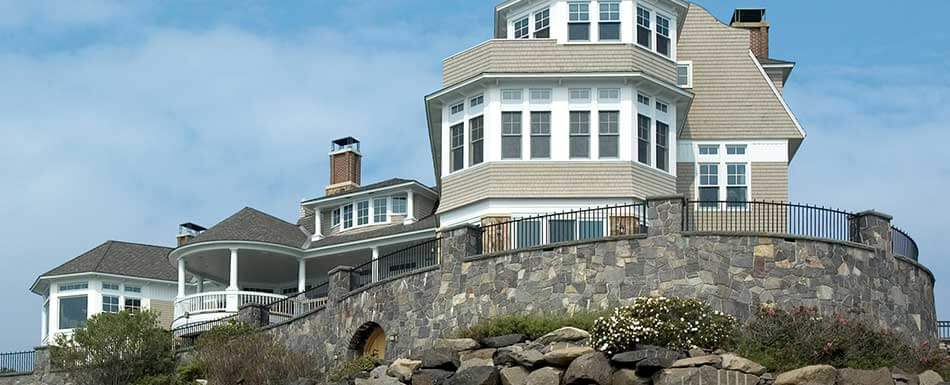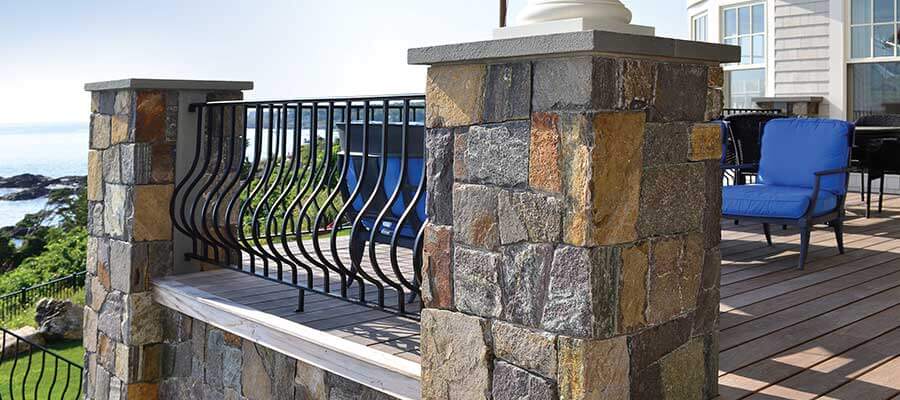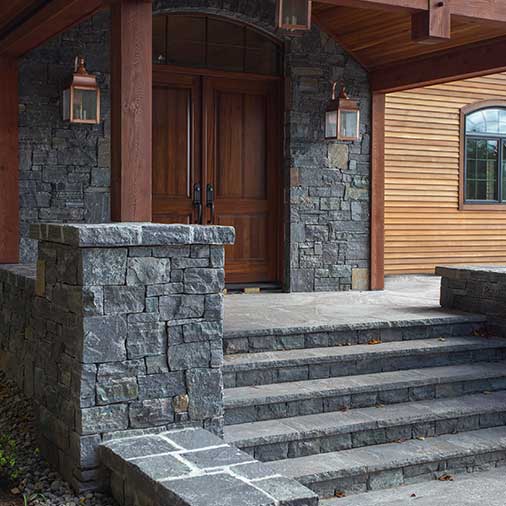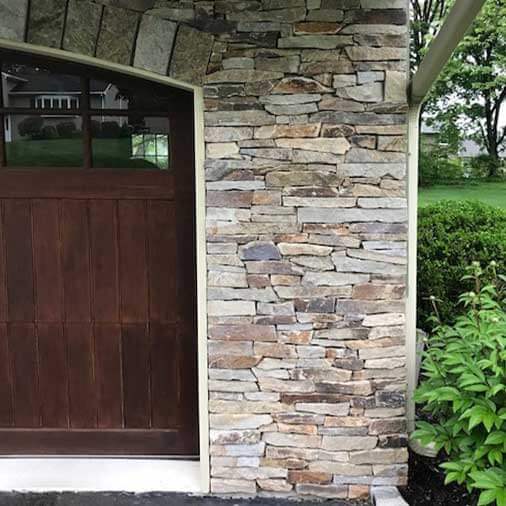Humans have used natural stone for buildings and other structures for thousands of years. The material is excellent to work with, simple to care for, and can last many lifetimes. The organic stone is entirely unaltered, containing no added color additives. It also requires very little maintenance and can withstand any weather condition. Quarrymen excavate the rock from the earth and slice it into veneer slabs of all shapes and sizes.
It’s a common misconception that natural stone costs much more than manufactured veneer, making the faux version a preferred choice. However, considering its vast range of advantages, natural thin stone veneer is the best choice for most interior and exterior home or business projects. It provides unmatchable attractiveness, strength, durability, and lifespan. Whether you’re working on a project with a traditional, vintage, or modern and contemporary look, stone veneer is likely the ideal option.
The Essential Stone Veneer Terminology
Stone veneer terminology can be confusing, and it’s essential to have a basic understanding before you begin any project. Knowing the terms and definitions can help you make the right choices for your desired style, design, and look. Natural stone veneer terminology includes the following:
● The air and water barrier is a fluid membrane that protects against water damage
● Thin stone veneer ranges from ¾” to 1 ½” thick
● Full Bed Building stones are blocks that range from three to five inches thick
● Cladding coats the structure and increases thermal energy efficiency
● Cultured stone is manufactured concrete stone molded to appear natural
● Dry-stack is a technique used to lay the stone in a manner that you cannot see the mortar joints.
● The face is the visible part of the stone
● Mortar is the paste to connect the stone to the surface and fill gaps between each stone
● Rise is the height measurement of a piece of stone
● Split face stones are cut against the grain to expose the natural texturing and structure within
● Weathering is the natural wear and tear caused by weather and other natural elements
The above is a condensed list of stone veneer terminology. View a more detailed and complete list here.
Things to Know About Natural Stone Veneer
Natural thin stone veneer cuts come in various shapes, and sizes. Thinly cut stone is approximately ¾” to 1 ½” in thickness and weighs about 15 pounds per square foot. Compare this with full bed stones for support and vertical structures, which weigh 50 to 60 pounds per square foot. There are various cuts and designs to choose from, and your needs will depend on the project. The different choices of stone veneer include the following:
● Square and rectangular combination cuts are perfect for mid-century modern projects
● Ledge cuts come in varying lengths and are excellent for projects with a more contemporary look
● Mosaic cuts come in varying sizes and tend to be more triangular in shape and can capture an industrial feel.
● Ashlar is more linear, with pieces appearing more uniform in size and are perfect for a minimalist project
A project may entail one style and shape of veneer stone throughout, or you can include mixes of various sizes and designs to add a little dimension and variety to your project..
Natural Stone Veneer is Environmentally Friendly
Natural stone veneer is the most environmentally friendly option for homes and buildings. Besides slicing or cutting it into varying sizes and shapes, the stone is ready for use.
Human-manufactured options require factory production and release toxic waste, air pollutants, and greenhouse grass contributions. Natural stone veneer also serves as a natural insulator, reducing the energy needed to heat or cool the home.
Stone Veneer Homes have Higher Resale Value
Homes built with natural stone veneer have higher resale value because of the building’s beauty, durability, and easy maintenance. Replacing siding and other materials with natural stone will significantly improve value, even if it is only portions of the structure.
Flexibility
Another factor making stone veneer superior to other materials is its flexibility. All you need are basic tools to combine it with nearly any surface, including wood, brick, cement, or metal.
The Difference Between Natural and Manufactured Veneer Stone
Natural veneer stone is solid, strong, and highly durable. Individuals can use it for any part of a home’s internal or external structure. Manufactured veneer stone is too fragile for many designs. It also requires more upkeep and replacement from wear and tear especially for exterior use.Natural stone is unique, attractive, longer lasting, and easier to clean and maintain.
Manufactured stone can be lighter, making it easier to handle, and is less expensive initially. However, the many advantages of using natural stone veneer outweigh the latter. The durability of natural stone in all weather conditions and insulation capabilities are untouched and will save money in the long run. Regardless of advancing technology, manufacturers can never duplicate natural stone’s unique textures, true earth tones and durability. .
Stone Veneer for Home and Building Interiors
Stone veneer adds texture to interior spaces and combines well with glass, woodgrains, metal, and other elements. Rooms have a natural feel, which can positively affect emotion and mood. It can elevate the sense of comfort and provide the same relaxation benefits as being out in nature.
Stone veneer is perfect for interior walls, fireplaces, and kitchens. Pair it with earthy tones, such as soft greens, browns, and blues, to create a warm and cozy environment in any room. Use the stone in the kitchen, den, bedroom, or bathroom to add elegance and comfort that will last for many years.
Natural Stone Veneer Turns Home Exteriors Into Masterpieces
Natural stone veneer is naturally beautiful, durable, and available in many shapes and patterns with varying shades and colors. Exterior veneer stone structures complement other textures and elements and last for years with little upkeep.
The stone will enhance the style of the building or home, making it more natural and aesthetically pleasing. The stone is beautiful and classy and doesn’t require a concrete base. Unlike manufactured stone, natural stone veneer and veneer mortar are strong enough without adding other supporting elements to the foundation such as anchors.

Installing Stone Veneer is Surprisingly Simple
People have used natural stone for thousands of years because it’s charming, durable, powerful, and lasting. Natural Thin Stone Veneer weighs less than full-thickness veneer (Full Bed Veneer), making the pieces easier to ship, handle, and install. The installation process doesn’t require builders to use footings, anchors, base, or ledges and pairs perfectly with other materials and hosts of surfaces, including plywood, paneling, metal, or concrete. The basic steps to install stone veneer includes the following:
- Apply air and water barrier to the cement or cement board if applying to an exterior wall
- Clear the surface of all dirt, dust, and other elements
- Lay out the stones in your desired pattern and design using one or a mix of styles and stone cuts
- Prepare the mortar by following the directions on the packaging
- Then apply the stone following the pattern you have laid out
- Apply the joint mortar and remove excess material before allowing the project to dry
After completing the application, allow it to settle for up to four weeks and if you choose, some people prefer to apply sealer, although this is not necessary .
Thinly cut stone veneer is perfect for interior and exterior projects, including chimneys, fireplaces, interior and exterior walls, kitchens, accent walls and bathrooms. The natural stone comes straight from the earth, and skilled stonecutters carefully craft them into thin strips of varying shapes and colors. Complete any project by stacking or laying them and enjoy their durability, beauty, and low maintenance for generations. Natural stone veneer provides attractive and unique textures and color variations you cannot find in any other manufactured material.
With a variety of stone profiles and colors to choose from, Green Mountain Veneer offers a wide variety of textures and tones to complement any interior or exterior home décor.
To get started with your veneer project, visit our Veneer Gallery for ideas and examples of how other homeowners, business professionals and stone masons have used Green Mountain Thin Stone Veneer to make their visions come to life.
With our gallery and veneer install guide you can see how our natural thin stone veneer brings to life different homes and styles. Green Mountain Veneer prides itself with customer service, a knowledgeable staff and extremely timely response time to address any questions you may have. We look forward to partnering with you for your next veneer project.
Next Steps
When you are ready to capture nature’s stone beauty in your home, call Green Mountain Veneer at (802) 377-3039 or contact us below. We offer a unique and wide-ranging selection of beautiful stone cut from quarries in the Northeast, and we ship nationwide! We look forward to partnering with you to create the home of your dreams.




